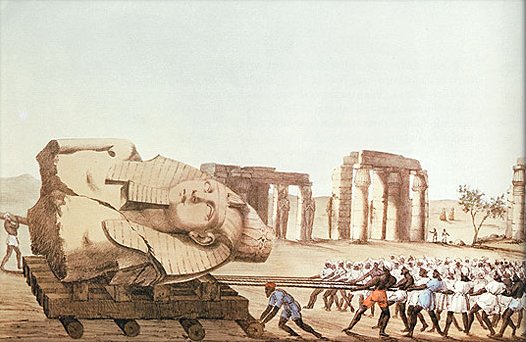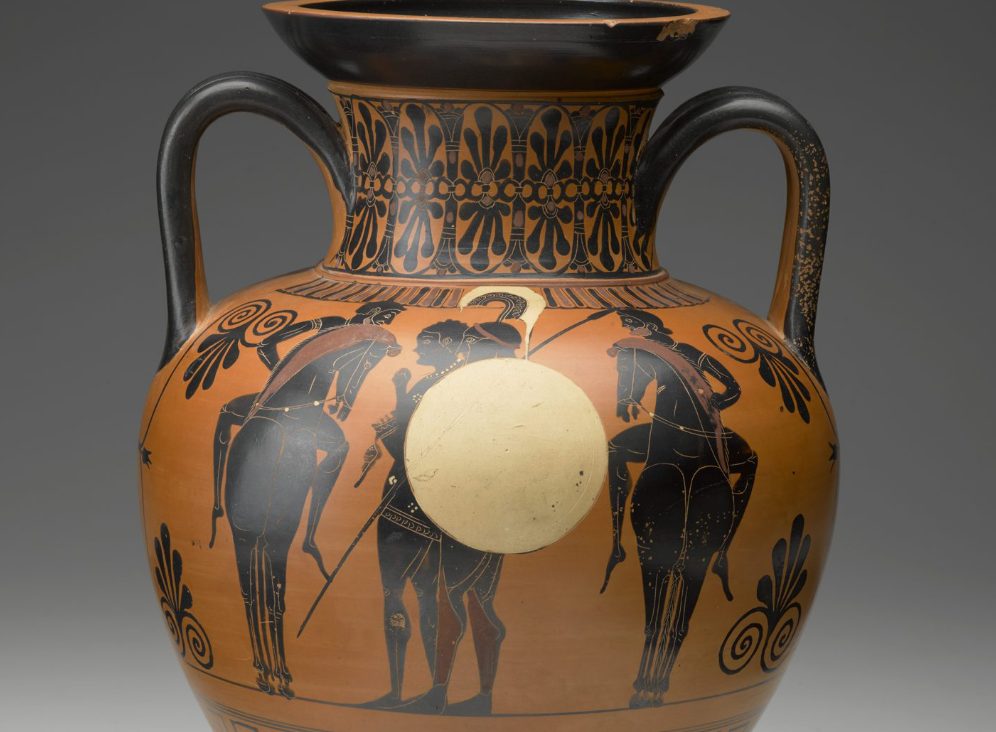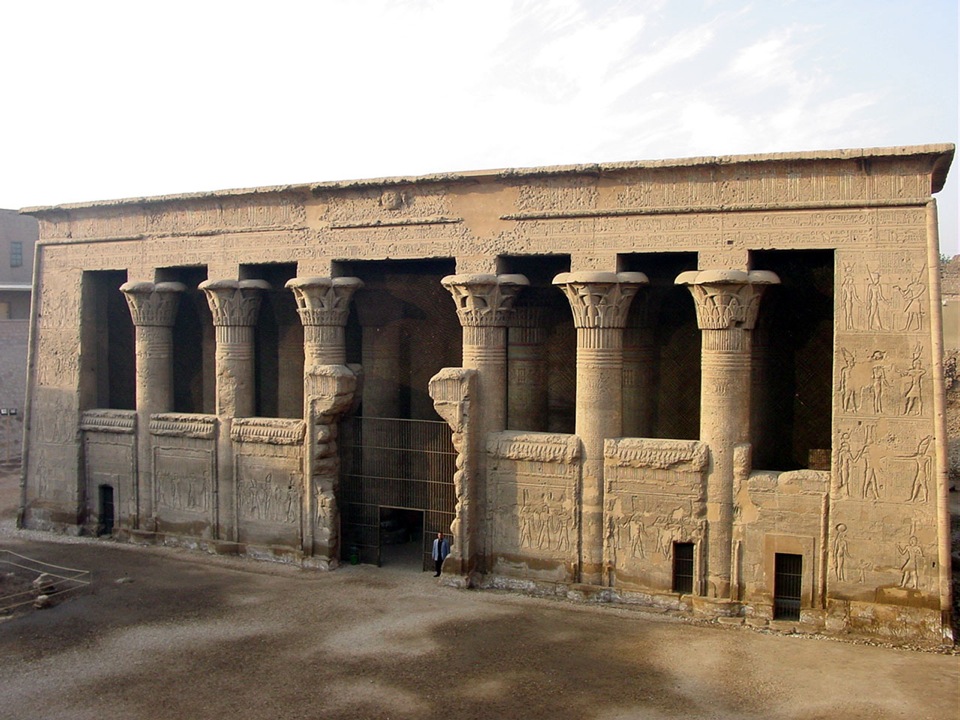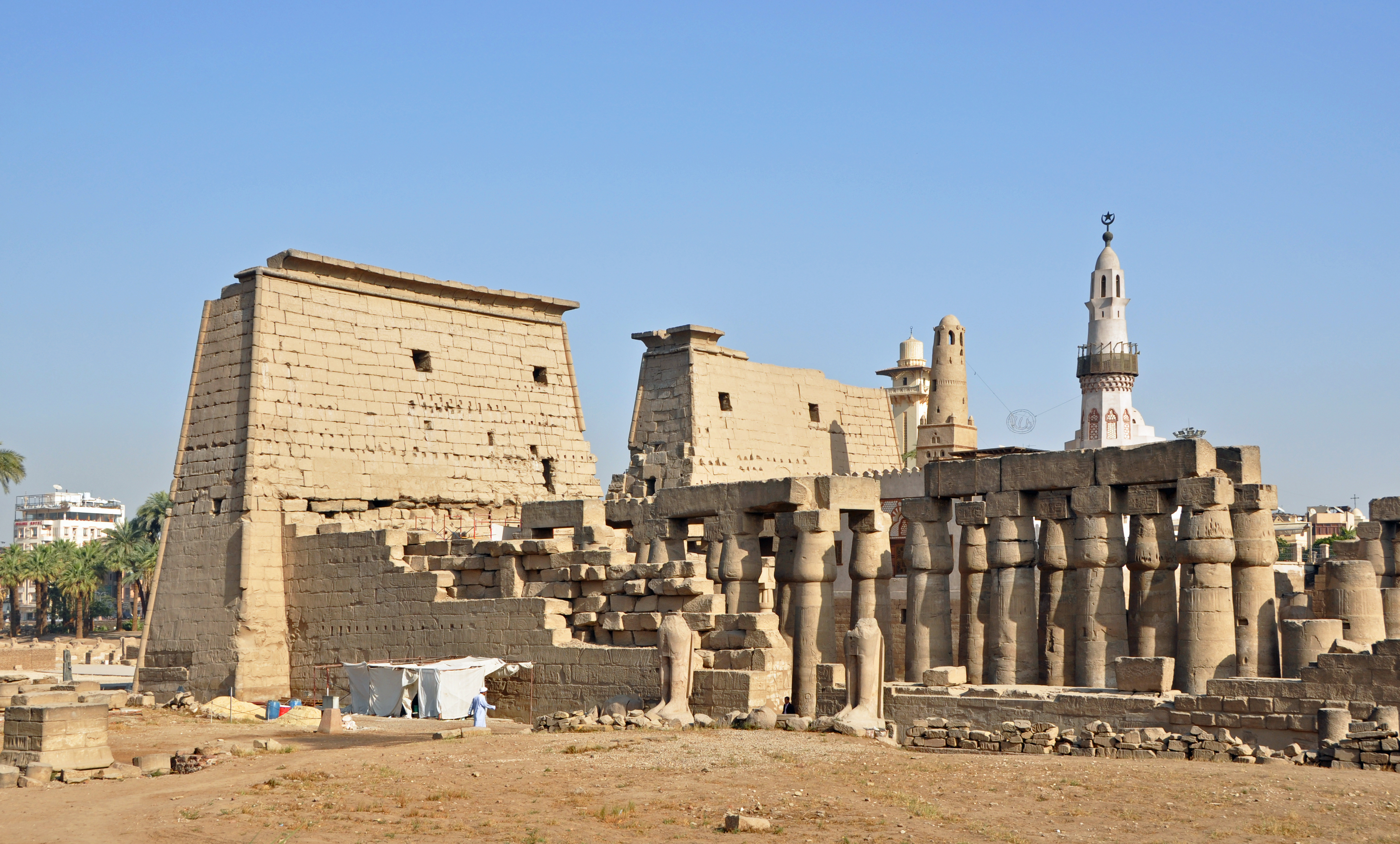|
Younger Memnon
The Younger Memnon is an Ancient Egyptian statue, one of two colossal granite statues from the Ramesseum mortuary ancient Egyptian temple, temple in Thebes, Egypt, Thebes, Upper Egypt. It depicts the Nineteenth Dynasty of Egypt, Nineteenth Dynasty Pharaoh Ramesses II wearing the Nemes head-dress with a uraeus, cobra diadem on top. The damaged statue has since been separated from its upper torso and head. These sections can now be found in the British Museum. The remainder of the statue remains in Egypt. It is one of a pair that originally flanked the Ramesseum's doorway. The head of the other statue is still found at the temple. Description The Younger Memnon is high × wide (across the shoulders). It weighs 7.25 tons and was cut from a single block of two-coloured granite. There is a slight variation of normal conventions in that the eyes look down slightly more than usual, and to exploit the different colours (broadly speaking, the head is in one colour, and the body anothe ... [...More Info...] [...Related Items...] OR: [Wikipedia] [Google] [Baidu] |
Ramesses II
Ramesses II (sometimes written Ramses or Rameses) (; , , ; ), commonly known as Ramesses the Great, was an Pharaoh, Egyptian pharaoh. He was the third ruler of the Nineteenth Dynasty of Egypt, Nineteenth Dynasty. Along with Thutmose III of the Eighteenth Dynasty of Egypt, Eighteenth Dynasty, he is often regarded as the greatest, most celebrated, and most powerful pharaoh of the New Kingdom of Egypt, New Kingdom, which itself was the most powerful period of ancient Egypt. He is also widely considered one of ancient Egypt's most successful warrior pharaohs, conducting no fewer than 15 military campaigns, all resulting in victories, excluding the Battle of Kadesh, generally considered a stalemate. In Ancient Greek literature, ancient Greek sources, he is called Ozymandias, derived from the first part of his Egyptian-language regnal name: . Ramesses was also referred to as the "Great Ancestor" by successor pharaohs and the Egyptian people. For the early part of his reign, he focu ... [...More Info...] [...Related Items...] OR: [Wikipedia] [Google] [Baidu] |
French Invasion Of Egypt (1798)
The French invasion of Egypt and Syria (1798–1801) was a military expedition led by Napoleon Bonaparte during the French Revolutionary Wars. The campaign aimed to undermine East India Company, British trade routes, expand French colonial empire, French influence, and establish a Commission des Sciences et des Arts, scientific and administrative presence in Egypt. Napoleon also sought to sever Britain's connection to its colonial holdings in India, with the long-term ambition of challenging British dominance in the region. Departing from Toulon in May 1798, Napoleon’s fleet, comprising around Armée d'Orient (1798), 36,000 troops, landed in Alexandria on 28 June. Advancing rapidly, he defeated the ruling Mamluks at the Battle of the Pyramids, securing control of Cairo and establishing a French administration. The campaign, however, was soon compromised by the Battle of the Nile, destruction of the French fleet at Aboukir Bay by Horatio Nelson, which cut off French reinfor ... [...More Info...] [...Related Items...] OR: [Wikipedia] [Google] [Baidu] |
Memnon (mythology)
In Greek mythology, Memnon (; Ancient Greek: Μέμνων, ) was a king of Aethiopia and son of Tithonus and Eos. During the Trojan War, he brought an army to Troy's defense and killed Antilochus, Nestor (mythology), Nestor's son, during a fierce battle. Nestor challenged Memnon to a fight, but Memnon refused, being there was little honor in killing the aged man. Nestor then pleaded with Achilles to avenge his son's death. Despite warnings that soon after Memnon fell so too would Achilles, the two men fought. Memnon drew blood from Achilles, but Achilles drove his spear through Memnon's chest, sending the Aethiopian army running. The death of Memnon echoes that of Hector, another defender of Troy whom Achilles also killed out of revenge for a fallen comrade, Patroclus. After Memnon's death, Zeus was moved by Eos' tears and granted him immortality. Memnon's death is related at length in the lost epic ''Aethiopis'', likely composed after ''The Iliad'', circa the 7th century Befo ... [...More Info...] [...Related Items...] OR: [Wikipedia] [Google] [Baidu] |
Amenhotep III
Amenhotep III ( , ; "Amun is satisfied"), also known as Amenhotep the Magnificent or Amenhotep the Great and Hellenization, Hellenized as Amenophis III, was the ninth pharaoh of the Eighteenth Dynasty of Egypt, Eighteenth Dynasty. According to different authors following the "Low Chronology", he ruled New Kingdom of Egypt, Egypt from June 1386 to 1349 BC, or from June 1388 BC to December 1351 BC/1350 BC, after his father Thutmose IV died. Amenhotep was Thutmose's son by a minor wife, Mutemwiya. His reign was a period of unprecedented prosperity and splendour, when Egypt reached the peak of its artistic and international power, and as such he is considered one of ancient Egypt's greatest pharaohs. He is also one of the few pharaohs who was one of the few pharoahs who was List of pharaohs deified during lifetime, worshipped as a deity during his lifetime. When he died in the 38th or 39th year of his reign he was succeeded by his son Amenhotep IV, who later changed his name to Akhe ... [...More Info...] [...Related Items...] OR: [Wikipedia] [Google] [Baidu] |
Ozymandias
"Ozymandias" ( ) is a sonnet written by the English Romantic poet Percy Bysshe Shelley. It was first published in the 11 January 1818 issue of '' The Examiner'' of London. The poem was included the following year in Shelley's collection '' Rosalind and Helen, A Modern Eclogue; with Other Poems,'' and in a posthumous compilation of his poems published in 1826. The poem was created as part of a friendly competition in which Shelley and fellow poet Horace Smith each created a poem on the subject of Egyptian pharaoh Ramesses II under the title of ''Ozymandias'', the Greek name for the pharaoh. Shelley's poem explores the ravages of time and the oblivion to which the legacies of even the greatest are subject. Origin Shelley began writing the poem "Ozymandias" in 1817, upon anticipation of the arrival in Britain of the Younger Memnon, a head-and-torso fragment of a statue of Ramesses II acquired by Italian archeologist Giovanni Battista Belzoni from the Ramesseum, the mortuary ... [...More Info...] [...Related Items...] OR: [Wikipedia] [Google] [Baidu] |
Alexandria
Alexandria ( ; ) is the List of cities and towns in Egypt#Largest cities, second largest city in Egypt and the List of coastal settlements of the Mediterranean Sea, largest city on the Mediterranean coast. It lies at the western edge of the Nile Delta, Nile River delta. Founded in 331 BC by Alexander the Great, Alexandria grew rapidly and became a major centre of Hellenic civilisation, eventually replacing Memphis, Egypt, Memphis, in present-day Greater Cairo, as Egypt's capital. Called the "Bride of the Mediterranean" and "Pearl of the Mediterranean Coast" internationally, Alexandria is a popular tourist destination and an important industrial centre due to its natural gas and petroleum, oil pipeline transport, pipelines from Suez. The city extends about along the northern coast of Egypt and is the largest city on the Mediterranean, the List of cities and towns in Egypt#Largest cities, second-largest in Egypt (after Cairo), the List of largest cities in the Arab world, fourth- ... [...More Info...] [...Related Items...] OR: [Wikipedia] [Google] [Baidu] |
Esna
Esna ( , or ; ''Snē'' from ''tꜣ-snt''; ''Latópolis'' or (''Pólis Látōn'') or (''Lattōn''); Latin: ''Lato'') is a city of Egypt. It is located on the west bank of the Nile some south of Luxor. The city was formerly part of the modern Qena Governorate, but as of 9 December 2009, it was incorporated into the new Luxor Governorate. Latopolis This city of Latopolis (πόλις Λάτων) in the Thebaid of Upper Egypt should not be confused with the more northerly city of Letopolis (Λητοῦς Πόλις), ancient Khem, modern Ausim, in the Nile Delta in Lower Egypt. Ancient city In Arabic: iwan-iyyah ( إيوان-ية ) in New Kingdom and ( زين-ية ) in Late Period. The name "Latopolis" is in honor of the Nile perch, ''Lates niloticus'', the largest of the 52 species which inhabit the Nile, which was abundant in these stretches of the river in ancient times, and which appears in sculptures, among the symbols of the goddess Neith, associated ... [...More Info...] [...Related Items...] OR: [Wikipedia] [Google] [Baidu] |
Luxor
Luxor is a city in Upper Egypt. Luxor had a population of 263,109 in 2020, with an area of approximately and is the capital of the Luxor Governorate. It is among the List of oldest continuously inhabited cities, oldest continuously inhabited cities in the world. Luxor has frequently been characterized as the ''world's greatest open-air museum'', as the ruins of the Egyptian temple complexes at Karnak and Luxor Temple, Luxor stand within the modern city. Immediately opposite, across the River Nile, lie the monuments, temples and tombs of the West Bank Theban Necropolis, which includes the Valley of the Kings and the Valley of the Queens. Thousands of tourists from all around the world arrive annually to visit Luxor's monuments, contributing greatly to the economy of the modern city. Yusuf Abu al-Haggag is the prominent Muslim historical figure of Luxor. Etymology The name ''Luxor'' derives from the Arabic , meaning "castle" or "palace", in the plural form ''al-quṣūr'' (� ... [...More Info...] [...Related Items...] OR: [Wikipedia] [Google] [Baidu] |
River Nile
The Nile (also known as the Nile River or River Nile) is a major north-flowing river in northeastern Africa. It flows into the Mediterranean Sea. The Nile is the longest river in Africa. It has historically been considered the longest river in the world, though this has been contested by research suggesting that the Amazon River is slightly longer.Amazon Longer Than Nile River, Scientists Say Of the world's major rivers, the Nile has one of the lowest average annual flow rates. About long, its covers eleven countries: the |
Cairo
Cairo ( ; , ) is the Capital city, capital and largest city of Egypt and the Cairo Governorate, being home to more than 10 million people. It is also part of the List of urban agglomerations in Africa, largest urban agglomeration in Africa, List of largest cities in the Arab world, the Arab world, and List of largest metropolitan areas of the Middle East, the Middle East. The Greater Cairo metropolitan area is List of largest cities, one of the largest in the world by population with over 22.1 million people. The area that would become Cairo was part of ancient Egypt, as the Giza pyramid complex and the ancient cities of Memphis, Egypt, Memphis and Heliopolis (ancient Egypt), Heliopolis are near-by. Located near the Nile Delta, the predecessor settlement was Fustat following the Muslim conquest of Egypt in 641 next to an existing ancient Roman empire, Roman fortress, Babylon Fortress, Babylon. Subsequently, Cairo was founded by the Fatimid Caliphate, Fatimid dynasty in 969. It ... [...More Info...] [...Related Items...] OR: [Wikipedia] [Google] [Baidu] |
Giovanni Belzoni
Giovanni Battista Belzoni (; 5 November 1778 – 3 December 1823), sometimes known as The Great Belzoni, was a prolific Italian explorer and pioneer archaeologist of Egyptian antiquities. He is known for his removal to England of the seven-tonne bust of Ramesses II, the clearing of sand from the entrance of the great temple at Abu Simbel, the discovery and documentation of the tomb of Seti I (still sometimes known as "Belzoni's Tomb"), including the sarcophagus of Seti I, and the first to penetrate into the Pyramid of Khafre, the second pyramid of the Giza complex. Early life Belzoni was born in Padua. His father was a barber who sired fourteen children. His family was from Rome and when Belzoni was 16 he went to work there, saying that he studied hydraulics. He intended on taking monastic vows, but in 1798 the occupation of the city by French troops drove him from Rome and changed his proposed career. In 1800 he moved to the Batavian Republic (now Netherlands) where he ear ... [...More Info...] [...Related Items...] OR: [Wikipedia] [Google] [Baidu] |
Henry Salt (egyptologist)
Henry Salt (14 June 178030 October 1827) was an English artist, traveller, collector of antiquities, diplomat, and Egyptologist. Biography Early life Salt, the son of Thomas Salt who was a physician and Alice ''née'' Butt, was born in Lichfield on 14 June 1780. He was the youngest of eight children and went to school in Lichfield, Market Bosworth, and then in Birmingham under where his brother John Butt Salt taught. He took an early interest in portrait painting. While in Lichfield, he studied under a watercolour artist, John Glover, and in 1789, he went to London where he first studied under Joseph Farington and later under John Hoppner. After a time, he gave up portrait painting, having failed to build up a reputation. Early travels Salt found a position with the English nobleman George Annesley, Viscount Valentia, travelling as his secretary and draughtsman, recommended by Thomas Simon Butt. They started on an eastern tour in June 1802, sailing on the British East Ind ... [...More Info...] [...Related Items...] OR: [Wikipedia] [Google] [Baidu] |









